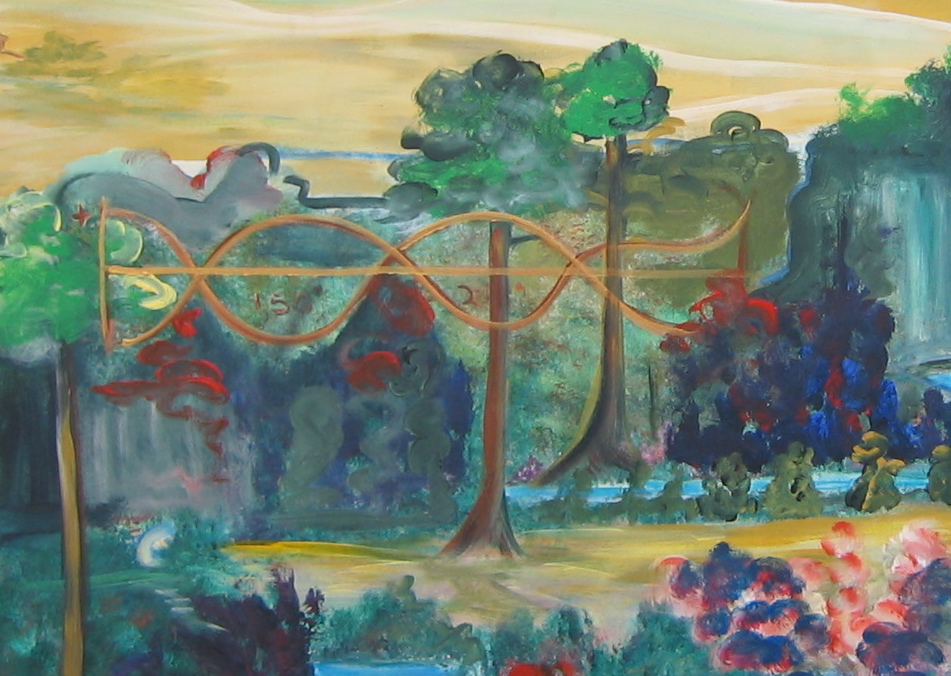|
Calculus II Spring 2005 |
 |
 |
|
Calculus II Spring 2005 |
 |
 |
| Lecture: | MWF 9:10-10:00 BUS 217 |
| Recitation session: | Tu 8:10-9:00 BUS 210/TH 404 |
| Prerequisites: | MATH 226 (Calculus I) with a grade of C or better |
| Instructor: | Dr. Matthias Beck | Teaching Assistant: | Ivan Ashton | |||||||
| Office: | Thornton Hall 933 | Office: | Thornton Hall 925 | |||||||
| Office hours: |
|
& by appointment | Office hours: |
|
& by appointment | |||||
| Phone: | +1 415 405 3473 | Email: | teachermrivan[at]yahoo.com | |||||||
| Email: | beck[at]math.sfsu.edu |
The main objective of Calculus II is for students to continue learning the basics of the calculus of functions of one variable. They will study the concepts and techniques of integration, parametric equations, and infinite sequences and series, culminating with Taylor series. They will also apply these ideas to a wide range of problems that include area between curves, volume, arc length, and surface area. They will study approximate integration, a topic that will involve an introduction to Mathematica. The students should be able to interpret the concepts of Calculus algebraically, graphically, and verbally. More generally, the students will improve their ability to think critically, to analyze a problem and solve it using a wide array of tools. Topics covered in the course will include:
I want to ensure that each of you accomplishes the goals of this course as comfortably and successfully as possible. At any time you feel overwhelmed or lost, please come and talk with me.
Text: James Stewart, Calculus, Early Transcendentals, 5'th edition. I plan to cover (at least) Sections 5.4, 5.5, 6.1, 6.2, 6.3, 6.5, 7.1, 7.4, 7.5, 7.7, 7.8, 8.1, 8.2, 10.1, 10.2, 10.3, 11.1-10.
Grading system & exam dates:
|
|
I will assign homework problems as we go through the material. All homework problems are posted here. We can discuss the homework problems at any time during class and the recitation session. I will frequently check your homework progress through unannounced quizzes given at the beginning of class or recitation session. Each quiz will consist of one of the recently assigned problems. There will be no make-up quizzes. At the end of the semester, I will drop the lowest of your quiz grades.
The way to learn math is through doing math. It is vital and expected that you attend every lecture and discussion session. You will get a good feel for the math from there, but it is even more crucial that you do the homework. Working in groups is not only allowed but strongly recommended. The Blackboard system allows you to send emails to anybody in your class. Contact each other and work together.
There is a supplementary course for Calculus II, namely SCI 227, which can be heartily recommended. The mathematics department will also run a tutor center. Finally, there is a computer lab in TH 404, in which we will also meet for every other recitation session to learn how to use Mathematica. Here are some basic Mathematica files and the corresponding worksheets that we will use:
| Introduction to Mathematica | ||
| Surfaces of revolution | ||
| Approximation of integrals | worksheet | (This Mathematica notebook uses Riemann.m) |
| Parametric curves | worksheet | |
| Polar curves | worksheet | |
| Power series | worksheet |
This syllabus is subject to change. All assignments, as well as other announcements on tests, policies, etc., are given in class. If you miss a class, it is your responsibility to find out what's going on. I will try to keep this course web page as updated as possible, however, the most recent information will always be given in class. Always ask lots of questions in class; my courses are interactive. You are always encouraged to see me in my office.

"Spoon feeding, in the long run teaches us nothing but the shape of the spoon."
E. M. Forster